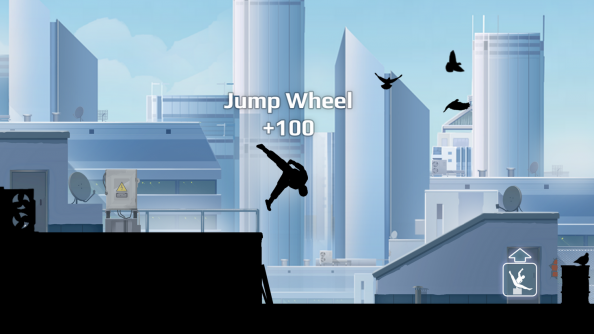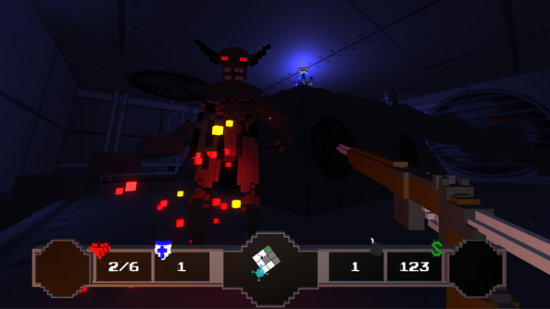Yesterday, we looked at developers who had made the leap onto Steam via Greenlight, but few such developers have had such positive experiences. To some, Greenlight feels like a rigged game, something closer to a poorly planned lottery than a service for developers or players.
“It’s real bad,” said Mike Maulbeck of Code Avarice, the team behind Paranautical Activity, when we spoke to them this summer. “It’s broken.”
“Garbage,” his colleague, Travis Pfenning, chipped in. It wasn’t the first time the team were so outspoken. It should be noted that Paranautical Activity has since been greenlit, one of the hundred titles Valve gave the go-ahead to in an enormous anniversary event, even in spite of Code Avarice’s very public critique — a critique that has yet to be completely addressed.
The pair had no hesitation about criticising a process that they saw as “shady,” ambiguous and inconsistent, as they believe it cost them dear. As Travis put it, “It screwed us out of a quarter of a million dollar deal.”
Code Avarice joined many other aspiring indies by placing Paranautical Activity on Steam Greenlight in the hopes of winning enough support to see the game adopted. Then Adult Swim took notice and told the team they could take the game directly to Valve in a big money deal.
Representatives from Adult Swim met with Valve, showed them a portfolio that included Paranautical Activity, but returned with news of a refusal precisely because, Maulbeck says, the game was already vying for a spot via Greenlight: “They said they don’t want to send the message that independent developers can use publishers to get around the system.”
The pair were, to say the least, disappointed. During an appearance on YouTuber green9090’s channel, they spoke at length about how unhappy with the system they were beyond just their rejection (“The service that’s supposed to get us onto Steam is the only thing stopping us from getting onto Steam.”). Maulbeck said that this inspired several other indies to join the discussion.
“People complain about it a lot,” Maulbeck explained. “With the whole Paranautical Activity thing, that got really big and a lot of press and now people are looking at Greenlight, they’re seeing all these inconsistencies. They’re like ‘What’s going on here?’” The inconsistencies he describes are an opaqueness in Valve’s statistics, their selection protocols and what seems to be a disregard for the rankings of games. The most voted-for games are not necessarily those that are greenlit.
Code Avarice are not the only critics. Widely-circulated amongst the indie community is a document by Six Sided Sanctuary‘s creator Poe, simply titled “The Problem”. Poe writes that, though Greenlight supposed to reward popular games by giving them a place on Steam, it doesn’t have nearly enough users even looking at it. “The average user is… unaware of Greenlight,” he writes. “Greenlight doesn’t get enough traffic to be able to get a game greenlit organically.” Poe suggests that the current system unfairly rewards “games that pander,” using keywords like “Minecraft,” while original and niche titles are overlooked.
He adds that, while games jostle for a place in the top one hundred, the quality of a game isn’t going to increase with the number of votes it needs to get greenlit. The document also features another call for greater transparency and more communication from Valve about what exactly they’re doing: “When Valve announces an update to the way Greenlight works it’s ALWAYS a surprise. Aside from titles getting greenlit we have almost zero interaction with you.”
This isn’t just sour grapes. Developers who have been greenlit can also sound lukewarm on the process.
“Greenlight wasn’t terrible, it was just confusing,” says Josh Bishop of Subterranean Games, the team behind War for the Overworld. While Chasm had to climb all the way to the top of the Greenlight charts, War for the Overworld was greenlit while just in the top twenty. It was, Bishop suggests, Valve’s prerogative.
“I think it’s more of a commercial thing. If you think about it, they’re greenlighting titles because they think they’re going to sell and make them money,” he says. “There’s all this ambiguity about how they choose what goes on the front page of Steam and it’s pretty simple. They choose what they think is going to make the most money, because they make a royalty on everything that’s sold. I’m pretty sure they’re greenlighting titles at a rate they think is the best to generate the most overall money through Steam. Fair enough, they’re a business and they should be doing that.”
While Bishop is more diplomatic, developer Rob Fearon is much closer to agreeing with Code Avarice. He decided to pull his game, Death Ray Manta, from Greenlight shortly after Paranautical Activity was rejected, though he stated in a blog post that “This was the catalyst for me removing DRM from Greenlight but not the reason.” While Fearon believes that Valve were not in the wrong to discourage deal-making with publishers, he writes that Greenlight is a convoluted process that has indies “dancing for someone who doesn’t really need them to dance. And when you have that sort of system, yes, it does open itself up to people trying to find a way to get round it.”
In an addendum added soon after, Fearon describes Greenlight as “Throwing indie developers into a competition for store space, one where they pay a fee and aren’t guaranteed anything.” It’s not a victory for self-publishing, he writes, and may in fact offer publishers more opportunities to snap up indies who are on the lookout for alternatives.
Guarantees certainly don’t exist. When we spoke to Valve about Paranautical Activity back in May, Doug Lombardi explained that they “review Greenlight votes, reviews, and a variety of factors in the Greenlight process.” That “variety of factors” very much suggests that climbing up the top one hundred is far from the be-all and end-all.
When it comes to how to bring either fairness or effectiveness to Greenlight, indies don’t lack ideas. Colin Walsh, of Celsius Game Studios, whose game Drifter is currently on Greenlight, suggests Valve may need more staff and resources devoted to Greenlight, including a team “who would be willing to take a chance on interesting but unproven games that could be commercially viable, but may not necessarily do well with a popularity contest-style voting system.” He agrees that niche titles may be marginalised, though he feels his own game is getting “a fair shot.”
Sos Sosowski, whose game McPixel was the first Greenlight title to see release, suggests changing the rating system “so that a person’s vote only counts if they had voted on (let’s say) 20 other games. That would clear Greenlight of the accusation of just being a popularity contest.” Meanwhile, Ian Hardingham, of Mode 7 Games, wonders if the least Valve can do is refund that $100 gateway fee they introduced to try and stem their early deluge of submissions. “I guess people have a massive problem with the fee when you might never be Greenlit,” he says. “It’s only there to stop complete troll entries, after all.”

During a talk at the University of Texas back in February, Valve’s Gabe Newell described a very different future. After calling Greenlight “a bad example of an election process,” he detailed a vision of Steam where Valve are no longer curators or arbiters. Instead, all its users would be able to use it as a distribution platform, something that would make life easier for Valve.
“We’ve become a bottleneck,” he conceded, in response to a question. “There’s so much content coming at us that we just don’t have enough time to turn the crank on the production process of getting something up on Steam… We didn’t get to it because we had four hundred other things to do.”
What exactly Valve will do next is, as usual, something they’re keeping under their hats, but they’re certainly aware that there’s been a growing interest in, and criticism of, how Greenlight works. Code Avarice’s Pfenning gives Newell credit for taking the time to listen to his complaints and to get in touch after Pfenning sent an email direct to the top to vent his frustrations. “Everybody in our circle was like ‘He ain’t gonna talk to you,’” Pfenning says. “And then he did. I’ll give him props for that.”
Valve’s Alden Kroll reminded us that Greenlight is very much a work in-progress and that Valve are learning from many of these same experiences. “The feedback that we’ve gathered as a result of creating Greenlight helped us understand that modifying the approval process wasn’t the part of the process that needed the most attention,” he said. “In the year since launching Greenlight, we’ve been focused on building the necessary tools to increase our throughput and to allow more and more developers access to Steamworks features and distribution via Steam. Of course that will come with a host of other challenges such as discoverability and quality control.”
While Paranautical Activity may now be greenlit, and Code Avarice now busier than ever (they were unable for a follow-up interview subsequent to their greenlighting), their criticisms may well ring true. But there are signs that Valve are making a real effort to address them, such as the fact that just this week they greenlit over thirty games, including Race the Sun.
As Kroll told us, “The best solution [for these problems] is to get more games through Greenlight.”
